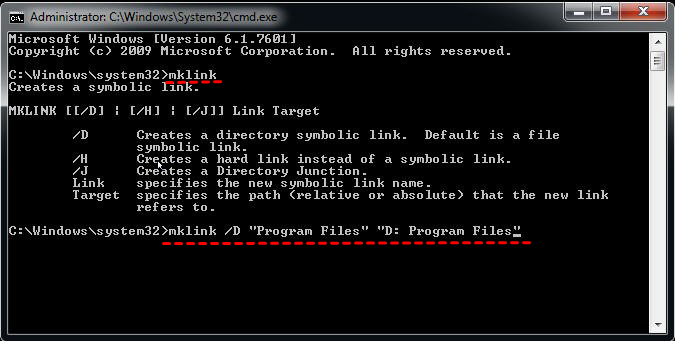How to Transfer Files from SSD to HDD (with Video)
You can easily transfer files from SSD to HDD by copy and paste, best free file sync software - AOMEI Backupper Standard, Move feature, etc. Scroll down to explore more!
"I am currently using Acer Swift 3 Windows 10. This laptop has two storages which are SSD and HDD. Every time I download or transfer any files from my pen drives, the files will be saved in SSD. I do not know how to save in HDD. I want to save in HDD because it has larger spaces compared to SSD. How do I transfer files from SSD to HDD and make HDD as my default storage? Please help me solve this. Thank you." – Question from Microsoft forum
Why transfer files from SSD to HDD?
Installing an operating system on a Solid State Drive (SSD) is an excellent option, as it can dramatically improve your computer's performance, including faster boot times, program loading times, smooth file browsing speeds, etc.
But due to its high price, many users would probably buy a smaller one, such as 128GB, 256GB, 512GB, and the disk space will be greatly reduced due to the increasing number of programs installed or files added, which may go beyond your expectations.
Thus, to keep a high computer performance, you may choose to transfer files from SSD to HDD, and it can be individual files, the user's data, or program files. Anyway, we'll show you how to free up disk space for SSD in 4 easy methods.
How to transfer files from SSD to HDD in Windows (4 Methods)
Here we'll show you how to successfully move files from SSD to HDD in 4 effective methods. The previous two methods are for transferring individual files (check the video tutorial), method 3 for user data, and method 4 for program files.
Video Tutorial:
Method 1: Move files from SSD to HDD with "Copy and Paste"
"Copy and Paste" is a built-in feature that can move files from SSD to HDD. Note it requires human intervention and best for small file transfer, especially those saved in the same directory, such as My Documents, Videos, Music and Pictures.
Go ahread and select what you would like to transfer, right click them and select Copy from the given options. Then, navigate to your HDD, right-click a blank space, and select Paste. That method can also be realized separately with Ctrl + C and Ctrl +V key combinations.
🔥 Method 2: Transfer files from SSD to HDD with software (Best for large file transfers)
With free file sync software - AOMEI Backupper Standard, you can easily transfer a large number of files from SSD to HDD, even they are in the different locations.

-
Sync any files or folders you want.
-
Schedule sync files and changes daily/weekly/monthly, etc.
-
Sync files to local disks, external drives, USB flash drives, NAS, or network drives, etc.
-
Fully compatible with Windows 11/10/8.1/8/7/Vista
Now, download free file sync software - AOMEI Backupper to get started.
-
Be sure the Volume Shadow Copy Service is on if you want to sync any used files and folders.
-
You can't sync files larger than 4GB to a FAT/FAT32 drive.
-
Some system files or program files with special security attributes (like C: \boot\bcd or C:\Windows\CSC) will not be synchronized.
How to transfer data from SSD to HDD with freeware:
Step 1. Install and launch AOMEI Backupper Standard. Click Sync, and then select Basic Sync.
Step 2. Click Select Source to add the files and folders you want to transfer from SSD to HDD.
Step 3. Click the PC icon on the right side. Then, go to Add New Destination > Local Drive and choose the HDD as destination path to store your files. You can find it quickly in Common Locations if you add it earlier.
Step 4. Optionally, click Schedule Sync and select Daily, Weekly, Monthly, etc., if you want to automatically sync files in Windows 11, 10, 8, 7, etc. You can also write a note or enable email notification in Options. At last, click Start Sync to transfer files from SSD to HDD.
-
Mirror sync: Be sure the destination directory is the same as the source directory. Any newly added or modified files in the destination path will be deleted.
-
Two-way sync: Sync files and their changes between the source and destination directories.
-
Real-time sync(best for teams): Monitor and sync files in real-time if there are any detected changes.
Method 3: Move user data from SSD to HDD
As the user case said, Windows will automatically select one disk as the default storage if there are both, which may result in insufficient disk space for small SSDs. You can choose to change the location of the default user's files and folder.
Step 1. Open user folder by typing %userprofile% in the Run box and click OK.
Step 2. Right-click a user folder, e.g., Documents, select Properties.
Step 3. In the Properties window, switch to Location and change C:\Users\Ivy\Documents to a new location, e.g., D:\Users\Ivy\Documents. Then, click Move and then Apply and OK to confirm the operation.
Method 4: Move program files from SSD to HDD
To move program files from SSD to HDD, you will use symbolic link command line to create a shortcut to program files attached to the desktop. Then, when Windows or any program tries to access the folder, the symbolic link redirects it to the new location.
Step 1. Move the entire folder“C: \Program Files” folder to new HDD.
Step 2. Type cmd and select Run as administrator to access the ommand Prompt window.
Step 3. Type the following command and press Enter to move program files.
mklink /D “Program Files” “D: Program Files”
-
“Program Files” is the name of your new symbolic link name.
-
“D: Program Files” is the path your new link refers to.
Also, you can learn more about move Program Files to another drive in Windows 10.
Wrapping things up
Now you can tell your friends what to do if they are facing the issue of how to transfer files from SSD to HDD in Windows 11/10/8/7, whether it's personal data, user files or program files. The same is true for how to transfer files from HDD to SSD. Just choose an appropriate method according to what kind of data you want to transfer.
Using the best free file sync software - AOMEI Backupper Standard is the best choice to transfer individual files, especially for the large number of files. It also allows users to directly clone the entire disk or a specific partition(e.g., system partition) without adding files or folders manually. Try the Disk Clone or System Clone feature available on the advanced edition.


